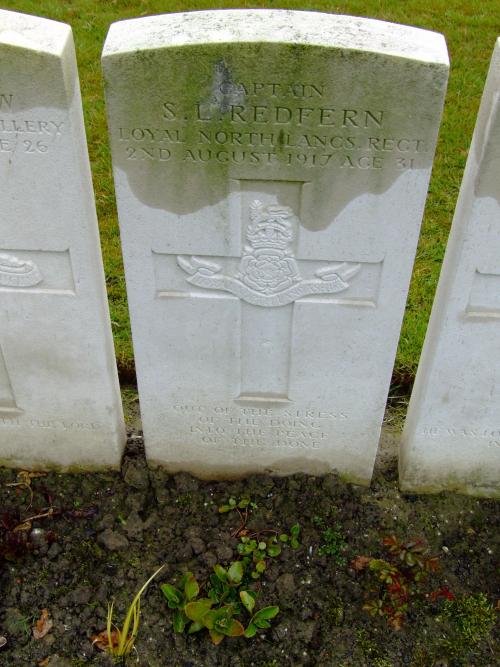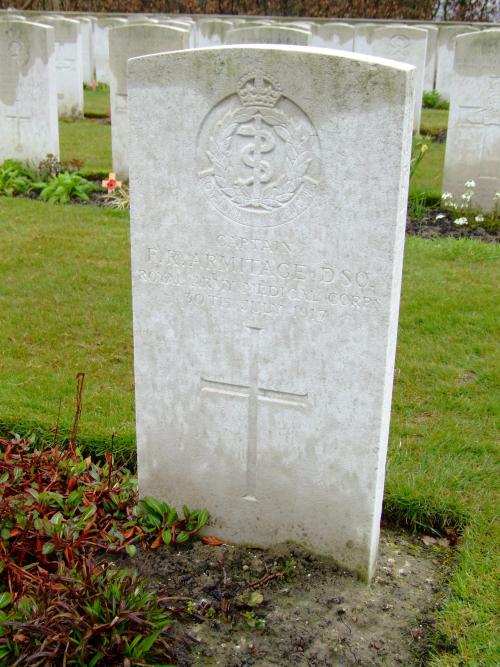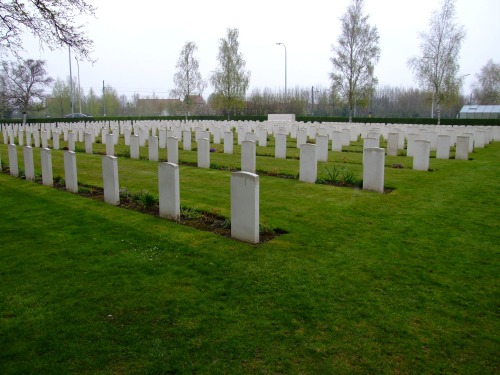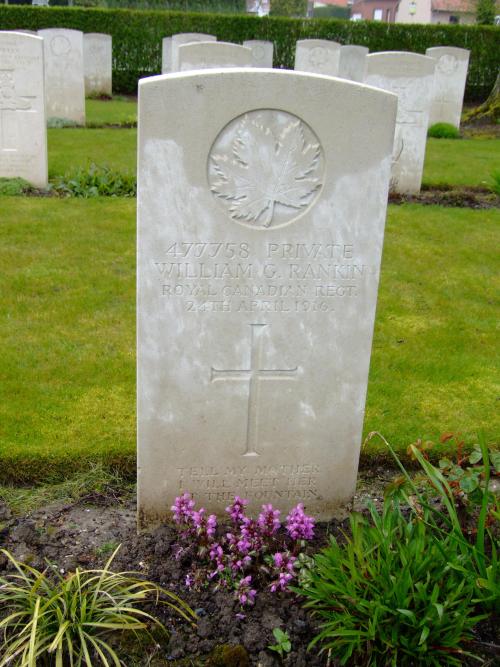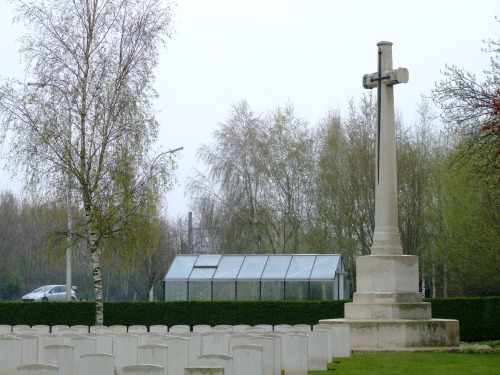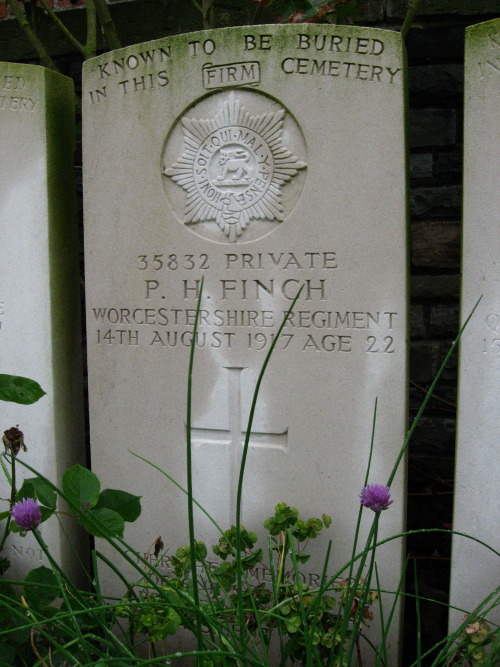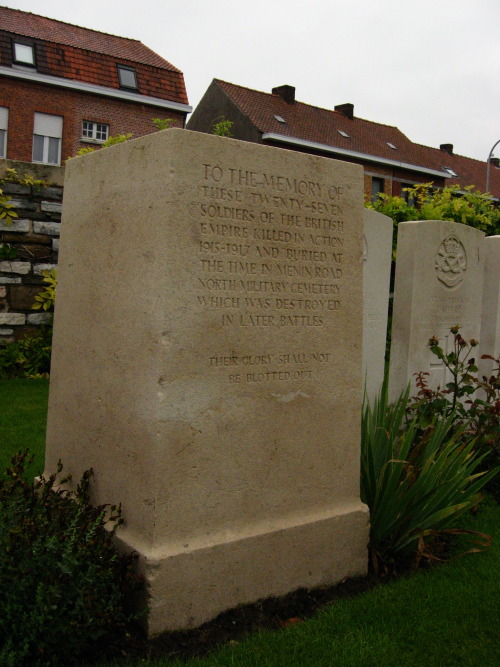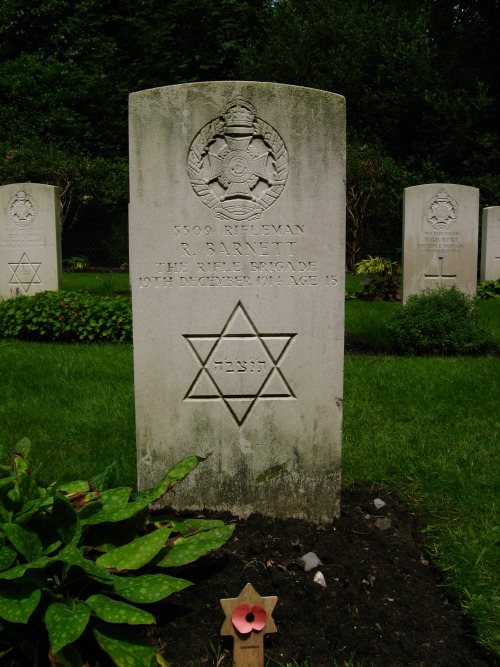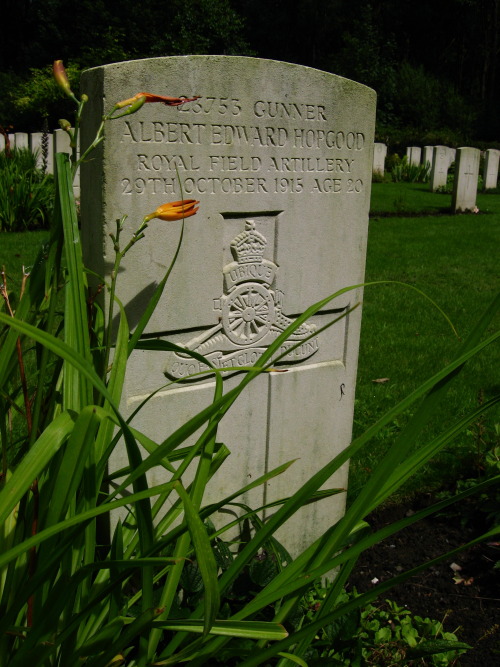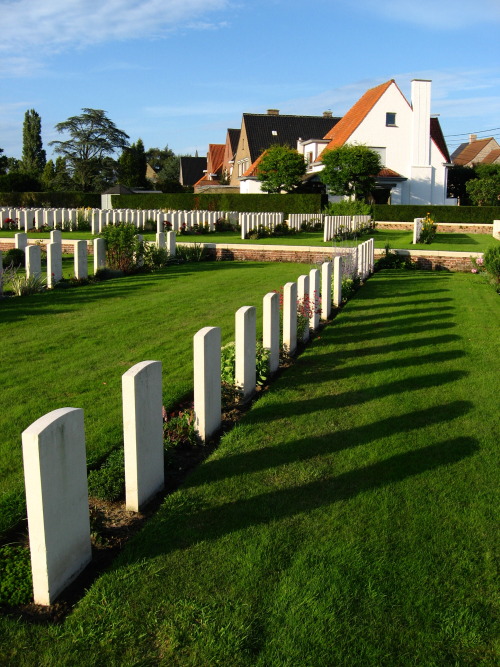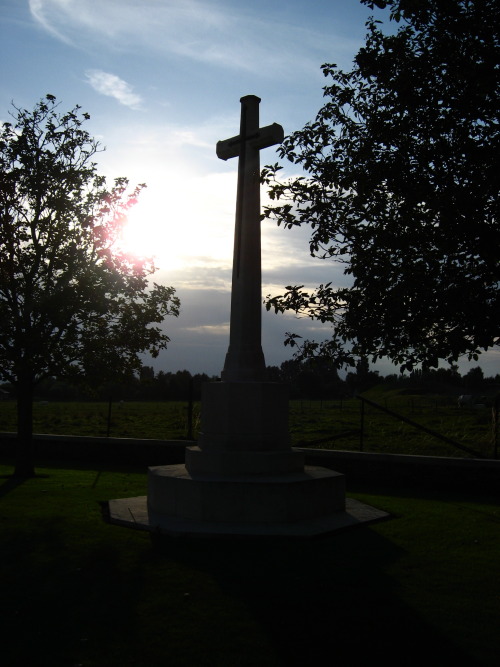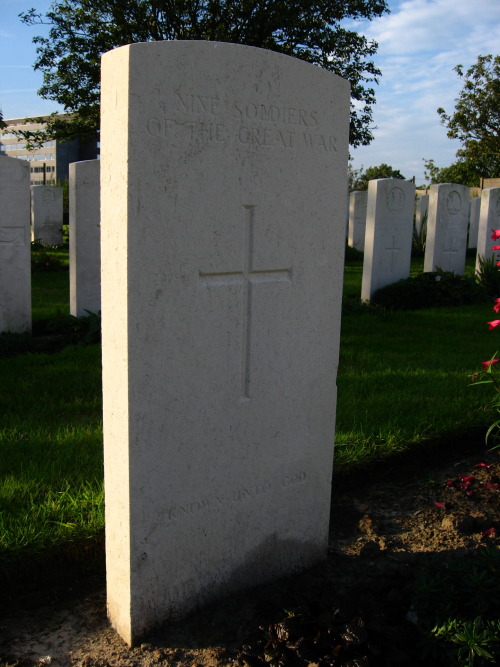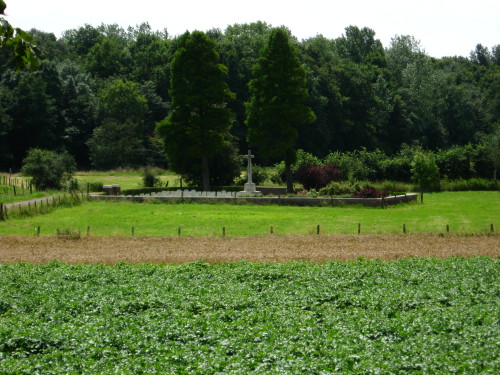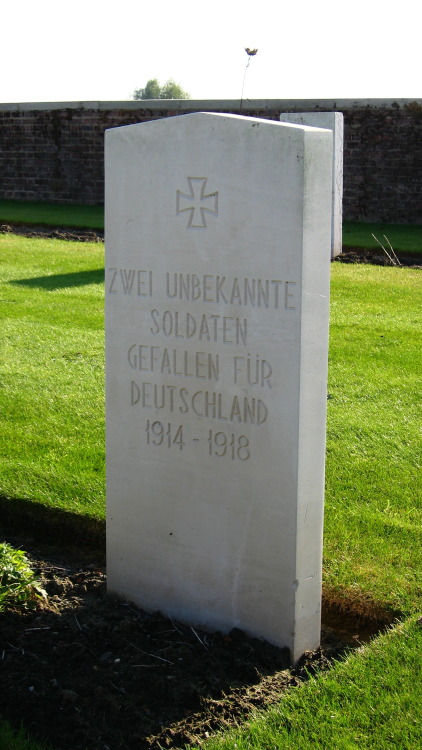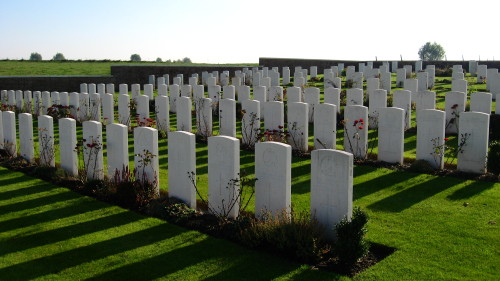Brandhoek New Military Cemetery No 3
Established in August 1917, Brandhoek New Military Cemetery No 3 holds 975 graves from the Great War. It was designed by Sir Reginald Blomfield.
The close proximity of this and the other two Brandhoek cemeteries gives a hint of how fierce the fighting was in this area in the spring and summer of 1915. A further subtle hint of the ferocity can be seen in No 3 cemetery itself: the close-packed nature of the gravestones, often with little or no space between them at all; and the rows, each with dozens of men with the same dates of death.
[CWGC] [WO1.BE] [WIKIPEDIA] [BOOK PAGE 32]
Brandhoek New Military Cemetery
Established in July 1917, Brandhoek New Military Cemetery was designed by Sir Reginald Blomfield. It holds 558 graves from the Great War. Captain Dr Noel Godfrey Chavasse, VC and bar, MC, one of only three people to have been awarded the Victoria Cross twice, is buried here.
Of no less interest is Private Wilkinson. His relatives have visited; he is not forgotten; and they have left him a bottle of local beer, a gesture appreciated by other visitors if not the boy himself.
[CWGC] [WO1.BE] [WIKIPEDIA] [BOOK PAGE 30]
Brandhoek Military Cemetery
Brandhoek Military Cemetery was established in May 1915.
Designed by Sir Reginald Blomfield, this cemetery holds 671 graves from the Great War.
On the Salient, you are never far from the next cemetery - more often than not, another War Cross is within view, then another, then another.
At Brandhoek, there is a non-unique cluster of three - cemetery, newer cemetery and third cemetery - emotionlessly named for what they are.
[CWGC] [WO1.BE] [WIKIPEDIA] [BOOK PAGE 28]
Menin Road South Military cemetery
Menin Road South, a Reginald Blomfeld-designed cemetery with 1658 burials and commemorations, lies just off the eponymous road that led from the Menin Gate at Ypres to the small town of Menin (known as Menen to the Dutch-speaking inhabitants). This road also led from relative safety behind the lines to the front line. Therefore, for thousands of soldiers it was the last road they ever travelled on.
Today, the city sprawl that marks - or marrs - the modern world follows the modern Meenseweg, with houses, factories and hospitals forming an almost unbroken urban area from Ieper out across the former front and into the countryside. As such, cemeteries like these, in the middle of suburbia, are both a haven from the 21st century and at the same time connected to it, with children playing in the back gardens of neighbouring prosperous houses. It is possible to ask “is this what they died for?”, but the answer is undoubtedly “yes”.
[CWGC] [WO1.BE] [WIKIPEDIA] [BOOK PAGE 36]
Rifle House cemetery
Rifle House, designed by William Harrison Cowlishaw, takes its name from a now-gone strong point in Ploegsteert Wood. Wild but still peaceful, the cemetery contains 230 graves, including that of Rifleman Robert Barnett of the 1st Battalion Rifle Brigade. He was killed on 19 December 1914, aged 15.
[CWGC] [WO1.BE] [WIKIPEDIA] [BOOK PAGE 68]
White House cemetery
White House Cemetery, designed by Sir Reginald Blomfield, contains 1163 Great War and 8 Second World War burials. Amongst these are Private Robert Morrow, who was awarded the Victoria Cross.
There are also the graves of four men who were “Shot at Dawn”: Private H H Chase of the Lancashire Fusiliers, executed for cowardice on 12 June 1915; Private W J Turpie of the Queen’s Royal West Surrey Regiment, executed for desertion on 1 July 1915; and Privates R W Gawler and A E Eveleigh of The Buffs (East Kent Regiment), both executed for desertion on 24 February 1916.
[CWGC] [WO1.BE] [WIKIPEDIA] [BOOK PAGE 66]
Mud Corner cemetery
Designed by G H Goldsmith, Mud Corner Cemetery is a small Commonwealth War Graves Commission cemetery. Established in 1917, the site has 85 burials from the Great War.There is no minimum size for a Commission cemetery - the smallest contains only the grave of Rupert Brooke - but the median size seems to be around 400. Mud Corner, at a mere 85, has a certain coziness to it - if that isn’t an inappropriate sentiment - and thus a peaceful, unhurried atmosphere, something like the original plan of the designers of these sacred locations.
[CWGC] [WO1.BE] [WIKIPEDIA] [BOOK PAGE 74]
Kemmel №1 French Cemetery
Kemmel No 1 French Cemetery’s origins are lost in the war. It was discovered by the French after the Armistice, with Empire, French and German burials. The French graves were removed to nearby French sites, leaving the German and Empire graves. There are 390 graves in this cemetery, 94 of them German. The cemetery was designed by Sir Edwin Lutyens.
The cemetery sits in the middle of open farmland, on a slight incline. Such inclines - natural and artificial - were extremely important strategically in relatively flat country and were usually hard won, changing hands several times even during general stalemate whilst the surrounding areas were reduced to a barren moonscape. In these circumstances, the “loss” of an entire cemetery until after the war had ended is entirely explicable.
[CWGC] [WO1.BE] [WIKIPEDIA] [BOOK PAGE 44]

















